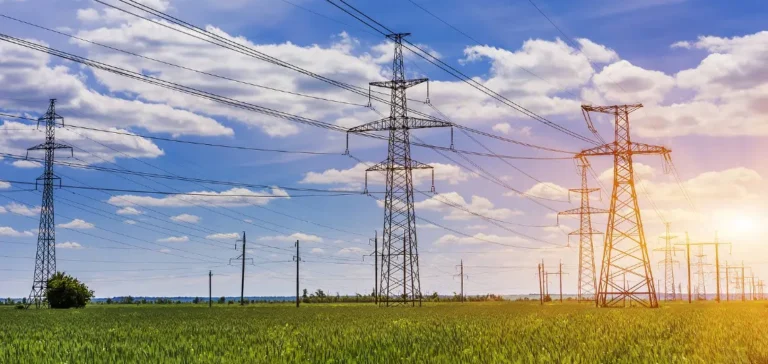The National Energy System Operator (NESO) has published its report “Future Energy Scenarios: Pathways to Net Zero 2025”, revealing that annual electricity demand in Great Britain could nearly triple to reach 785 Terawatt-hours (TWh) by 2050, up from 290 TWh today. This scenario calls for a significant acceleration in the rollout of clean energy, energy storage, and low-carbon technologies across all economic sectors.
Transformation of the energy mix and infrastructure
The report identifies three possible pathways to carbon neutrality, each based on varying degrees of electrification, hydrogen, and bioenergy. In all scenarios, annual emissions could be halved over the next decade, reaching 200 million tonnes of carbon dioxide (CO2) per year, then dropping to 100 million tonnes of CO2 by 2040 if the necessary infrastructure is deployed.
Grid capacity powered by wind and solar could grow by up to 98% by 2050. According to NESO, hydrogen would play a central role, supplying between 98 and 325 TWh by mid-century. Electric vehicles (EVs) are also identified as a major source of flexibility, with peak capacity reaching 51 gigawatts (GW), exceeding the current output of gas-fired power stations.
Challenges and stages of the transition
The national strategy for carbon neutrality is structured around four stages, with the second aiming for the accelerated integration of low-carbon technologies by 2030. This phase will enable the gradual expansion of energy markets and reinforce supply security. NESO highlights that the success of this transition will depend on the rapid adoption of energy efficiency measures and infrastructure modernisation.
The report emphasises the need for swift development of electricity, gas, and hydrogen networks, along with carbon capture and storage (CCS) facilities. For the industrial sector, financial incentives are seen as crucial to encourage conversion to lower-emission fuels and the adoption of CCS solutions.
Involvement of economic and industrial stakeholders
Fintan Slye, Chief Executive Officer of NESO, noted that the British electricity system recently operated at 95% carbon-free, marking a major milestone with the complete exit from coal. However, he stresses the importance of going further by accelerating the adoption of energy production and efficiency technologies to ensure the stability and affordability of the energy system.
The success of the next stages will depend on the engagement of households and businesses, supporting them in demand flexibility, purchasing electric vehicles or installing low-emission heating solutions. These measures are considered necessary to achieve energy security and maintain competitiveness in the European market.






















